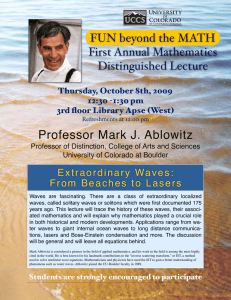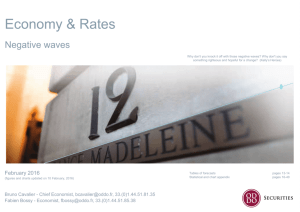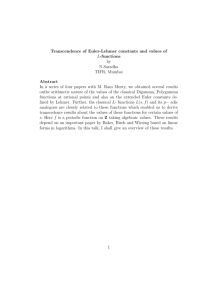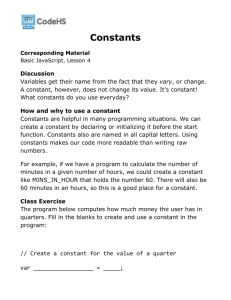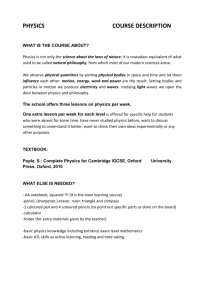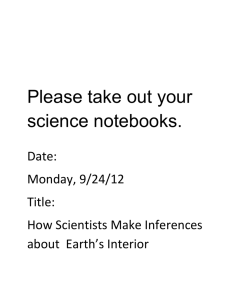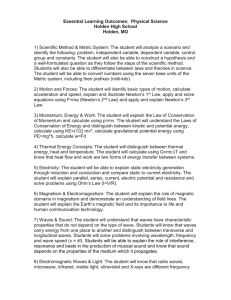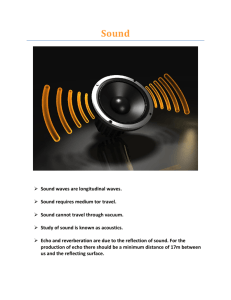SL PHYSICS SUMMER HOMEWORK---WAVES IA To start the year
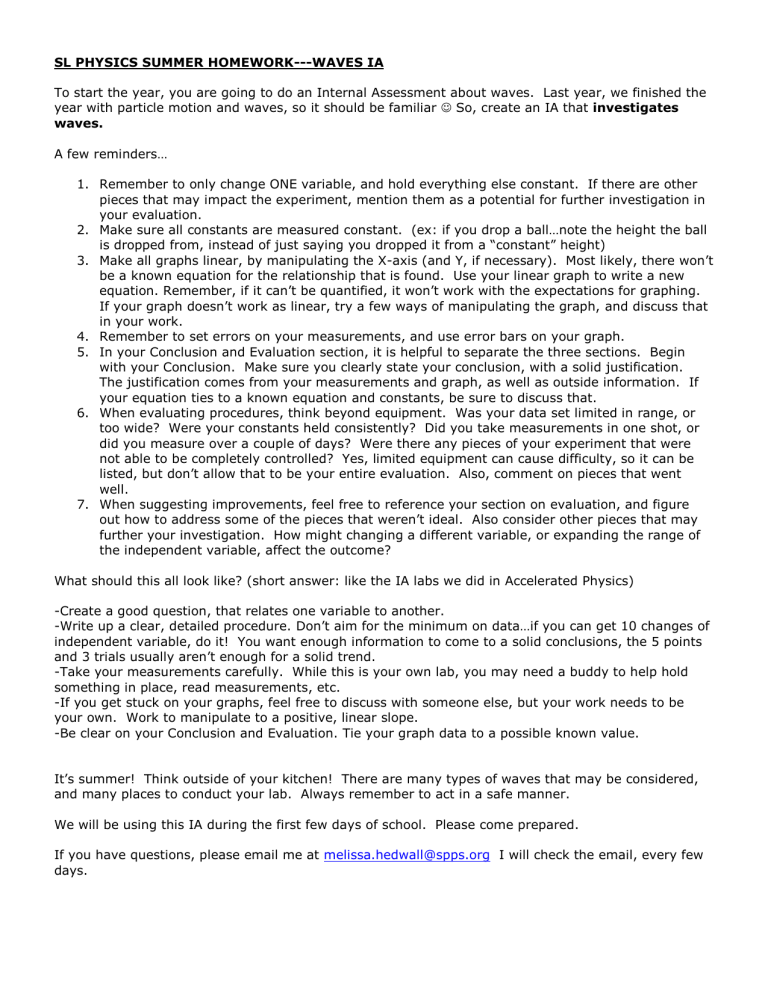
SL PHYSICS SUMMER HOMEWORK---WAVES IA
To start the year, you are going to do an Internal Assessment about waves. Last year, we finished the year with particle motion and waves, so it should be familiar So, create an IA that investigates waves.
A few reminders…
1.
Remember to only change ONE variable, and hold everything else constant. If there are other pieces that may impact the experiment, mention them as a potential for further investigation in
2.
your evaluation.
Make sure all constants are measured constant. (ex: if you drop a ball…note the height the ball is dropped from, instead of just saying you dropped it from a “constant” height)
3.
Make all graphs linear, by manipulating the X-axis (and Y, if necessary). Most likely, there won’t be a known equation for the relationship that is found. Use your linear graph to write a new equation. Remember, if it can’t be quantified, it won’t work with the expectations for graphing.
If your graph doesn’t work as linear, try a few ways of manipulating the graph, and discuss that in your work.
4.
Remember to set errors on your measurements, and use error bars on your graph.
5.
In your Conclusion and Evaluation section, it is helpful to separate the three sections. Begin with your Conclusion. Make sure you clearly state your conclusion, with a solid justification.
The justification comes from your measurements and graph, as well as outside information. If your equation ties to a known equation and constants, be sure to discuss that.
6.
When evaluating procedures, think beyond equipment. Was your data set limited in range, or too wide? Were your constants held consistently? Did you take measurements in one shot, or did you measure over a couple of days? Were there any pieces of your experiment that were not able to be completely controlled? Yes, limited equipment can cause difficulty, so it can be listed, but don’t allow that to be your entire evaluation. Also, comment on pieces that went well.
7.
When suggesting improvements, feel free to reference your section on evaluation, and figure out how to address some of the pieces that weren’t ideal. Also consider other pieces that may further your investigation. How might changing a different variable, or expanding the range of the independent variable, affect the outcome?
What should this all look like? (short answer: like the IA labs we did in Accelerated Physics)
-Create a good question, that relates one variable to another.
-Write up a clear, detailed procedure. Don’t aim for the minimum on data…if you can get 10 changes of independent variable, do it! You want enough information to come to a solid conclusions, the 5 points and 3 trials usually aren’t enough for a solid trend.
-Take your measurements carefully. While this is your own lab, you may need a buddy to help hold something in place, read measurements, etc.
-If you get stuck on your graphs, feel free to discuss with someone else, but your work needs to be your own. Work to manipulate to a positive, linear slope.
-Be clear on your Conclusion and Evaluation. Tie your graph data to a possible known value.
It’s summer! Think outside of your kitchen! There are many types of waves that may be considered, and many places to conduct your lab. Always remember to act in a safe manner.
We will be using this IA during the first few days of school. Please come prepared.
If you have questions, please email me at melissa.hedwall@spps.org
I will check the email, every few days.


